Fair warning: What I’m about to describe is not kosher. It’s not a recommended installation method, nor am I recommending it. I’m walking you through the idea so you can see the flaws and realize that there’s a better way.
Did you ever read the children’s book, “If You Give a Mouse a Cookie”? About how one thing leads to another, and another, like a Penrose staircase?
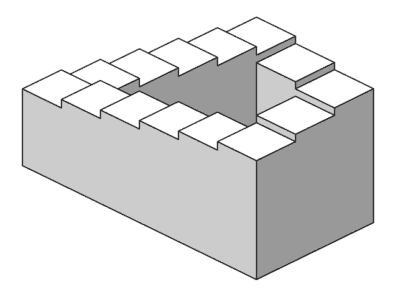
Installing an aftermarket RV inverter kind of works the same way. It’s not quite as easy it sounds. Everyone wants an inverter … until they find out about the installation requirements.
- If you want an inverter, you’ll need bigger batteries to go with it …
- With bigger batteries comes a larger converter/charger, maybe some solar panels …
- Plus you’ll need a transfer switch (some pass-through inverters have them built in) and possibly a separate subpanel for the inverter-powered AC circuits …
- Come to think of it, why not just dispense with the separate inverter installation and just upgrade to an all-in-one inverter/charger and rewire the heart of your power distribution system?!
Yeesh. Things get complicated fast.
What’s the Poor Man’s Version of a Whole-House Inverter?
Rumor has it that there is a simpler way to install an aftermarket inverter without too much rewiring. I’m calling it the “poor man’s whole-house RV inverter” installation. Here’s how the theory goes:
- Hardwire a 2,000- to 3,000-watt deck mount inverter directly to your battery bank.
- Wire the 120VAC inverter output to a TT-30R (30-amp) or 14-50R (50-amp) RV power receptacle, whichever your RV normally plugs into.
- Plug your RV shore power cord directly into the receptacle (with the correct adapter, if necessary).
Wallah! You have a poor man’s whole-house inverter installation. When you want to run your RV off inverter power, you simply plug in your shore power cord into your inverter. Ostensibly, it’s no different than if you hooked up a campsite.
There is, of course, a but. Actually, there are several buts, and they are dangerous.
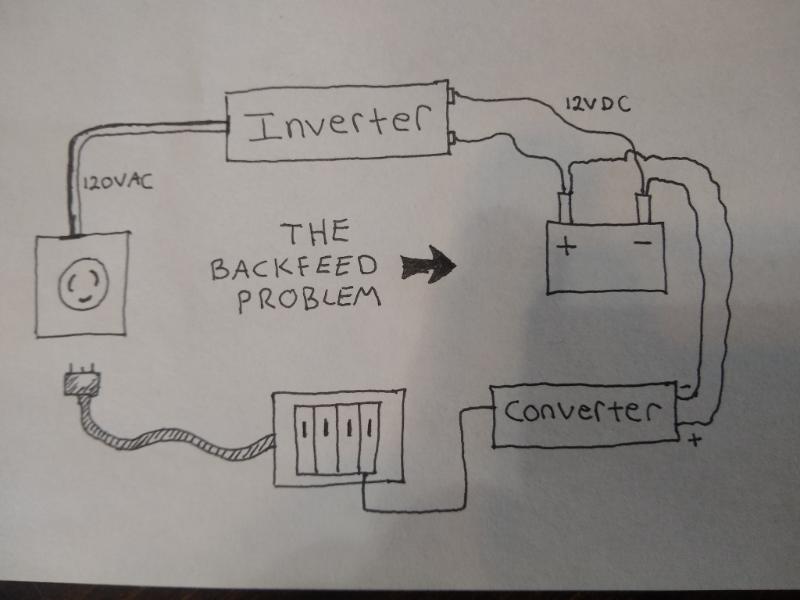
The Inverter Backfeed Problem: Inverters Charging Converters Charging Inverters …
If you allow an inverter to feed a converter that charges your batteries, then you’ve created an electrical loop.
The inverter transforms 12VDC electricity into 120VAC electricity … which the converter changes back into 12VDC power to charge the batteries … and then the batteries feed the inverter … *this is the song that never ends.*
A back feed loop wastes a tremendous amount of energy and will damage or ruin your electronics. It’s a big no-no. So you absolutely must disconnect your converter before plugging your shore power cord into the inverter!
Your converter is usually powered by one of your AC branch circuits in your Power Center*. The poor man’s method is to turn off that particular circuit breaker, which shuts down the converter and prevents backfeeding or battery charging. Unfortunately, that branch is usually shared with something else, so be prepared to lose some outlets or lights.
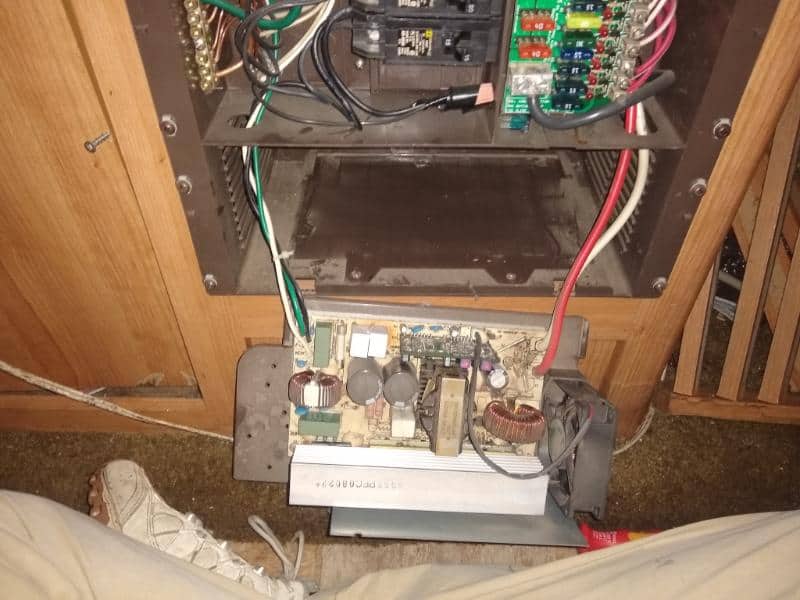
Enterprising RVers have MacGyvered some interesting “solutions.” One solution is to install a manual shut-off switch between the branch circuit breaker and the converter. Another is to install an automatic relay instead of a manual switch. And still another is to add an additional branch circuit breaker, sometimes in its own sub panel, to isolate the converter. Or, if there is space in the factory panelboard, you can replace a single breaker with a tandem breaker for the same effect.
>>> READ MORE: From the Road: Does an Inverter/Charger Need a Separate Converter?
What’s a Power Center?
*All-in-one power centers contain an AC distribution panel, a DC fuse box, and a built-in converter/battery charger. Most OEMs – WFCO, Powermax, Progressive Dynamics, Parallax – call these power centers or power distribution centers. Power centers are the de facto standard in 30A towable campers and even many 50A RVs.
(Not all RVs have all-in-one power centers. Premium, custom, or luxury RVs often divide the electrical power supply system into individual, customizable components: a deckmount converter paired with a split AC/DC panelboard, for instance. There are some big benefits to separating components, but at additional expense.)
The Power/Protection Problem: Where’s the Circuit Breaker?
The second major problem is lack of protection and insufficient power supply. Even though most inverters have built-in push-button circuit breakers, those don’t take the place of a proper panelboard with a thermal-magnetic resettable circuit breaker.
If you plug your RV into an inverter, your RV thinks it’s plugged into a regular site hookup. It will try to draw however many amps your electrical loads are calling for, only limited by the main breaker (single-pole 30-amp or double-pole 50 amp).
However, an inverter can only deliver so much power. A very common deckmount inverter size is 2,000 watts. At 120 volts, a 2,000-watt inverter can output about 16.7 amps. (For reference, the typical household outlet can carry up to 15 or 20 amps.) And we’re assuming that’s continuous power, not short-term surge power.
Now, your RV is designed to plug into either 30-amp 120VAC or 50-volt 120/240VAC service – not 16.7-amp!
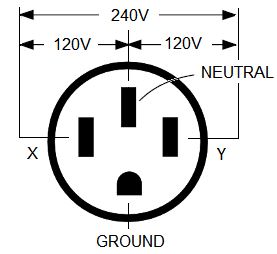
Do you see the problem? You don’t have enough inverter power to mimic shore power! Your inverter is a bottleneck. You won’t have enough power to run everything in your RV at the same time. Even a gigundous 4,000-watt inverter can only output about 33 amps (ideally), which isn’t anywhere near what a 50-amp RV (most 5th wheels, Class As, Class Cs, and many TTs) are designed to pull.
So if you try to run your air conditioner, something will pop (or fry). If you try to turn on your microwave and hair dryer at the same time, something will trip (or sizzle). But it won’t be your master breaker. Remember, your main breaker is perfectly happy at either 30 or 50 amps. Hopefully, it will be the piglet push-button breaker on the inverter itself. If you don’t even have one of those and you neglected to install additional protection, be prepared for fireworks!
Even if you protect the DC wiring with fuses (which you definitely should), you’d still want a separate breaker between the inverter output and the power receptacle. The DC fuses will likely be 150-amp (or larger) rated to protect the big, fat, stranded battery cables linking the inverter to the battery bank. They don’t directly protect the inverter output, only its input.
The Suicide Problem: Backfeeding Power to the Source
Believe it or not, there are even worse ideas on how to install an RV inverter.
- The Suicide Cord: Some RV owners have suggested using a male-to-male suicide cord to backfeeed inverter power directly into outlet, thereby energizing the entire branch circuit (and anything connected to it, like the other circuits.) This is incredibly dangerous for many reasons, some of which Mike Sokol has detailed here. Feeding power from load to source is never a good idea!
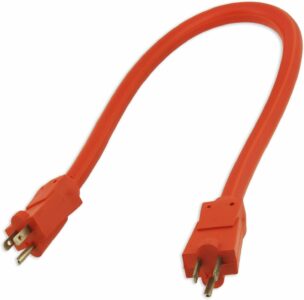
- Double Power Sources: Some RV owners suggest energizing one leg, subpanel, or circuit of the RV with both shore power and inverter power, where each power source has its own independent breaker. It’s up to the RV owner to switch the correct breaker off and on. Again, this is incredibly dangerous, and this is exactly why manual or automatic transfer switches were invented.
Conclusion: Hardwire an Inverter Correctly
I’ve never seen the “poor man’s method” recommended by any inverter OEM. I’ve only seen it suggested on RV owner forums. That’s because it fails the basic “idiotproof” rules of design and violates quite a few electrical safety codes. Now, forums are a good place to ask questions and vet your ideas, so I’m not poking fun at the OPs in the links above. I’m glad they asked the question and accepted the feedback, and I’m asking you to do the same as well.
Install your inverter correctly. All RV inverter manufacturers specify instructions in an Owner’s or Installation Manual. Usually, there are several options. Choose the one that works best for you. And if you’re not comfortable rewiring your RV, ask for professional help. Keep you, and your RV, safe!
Leave a Reply